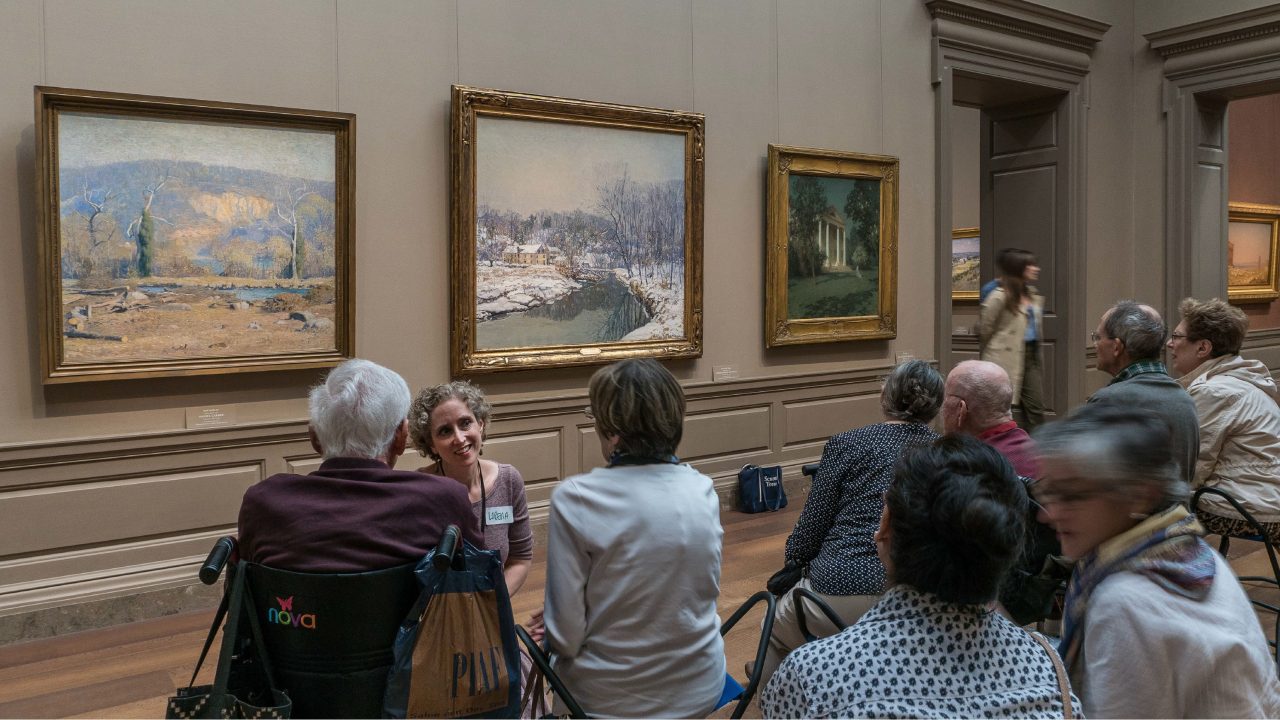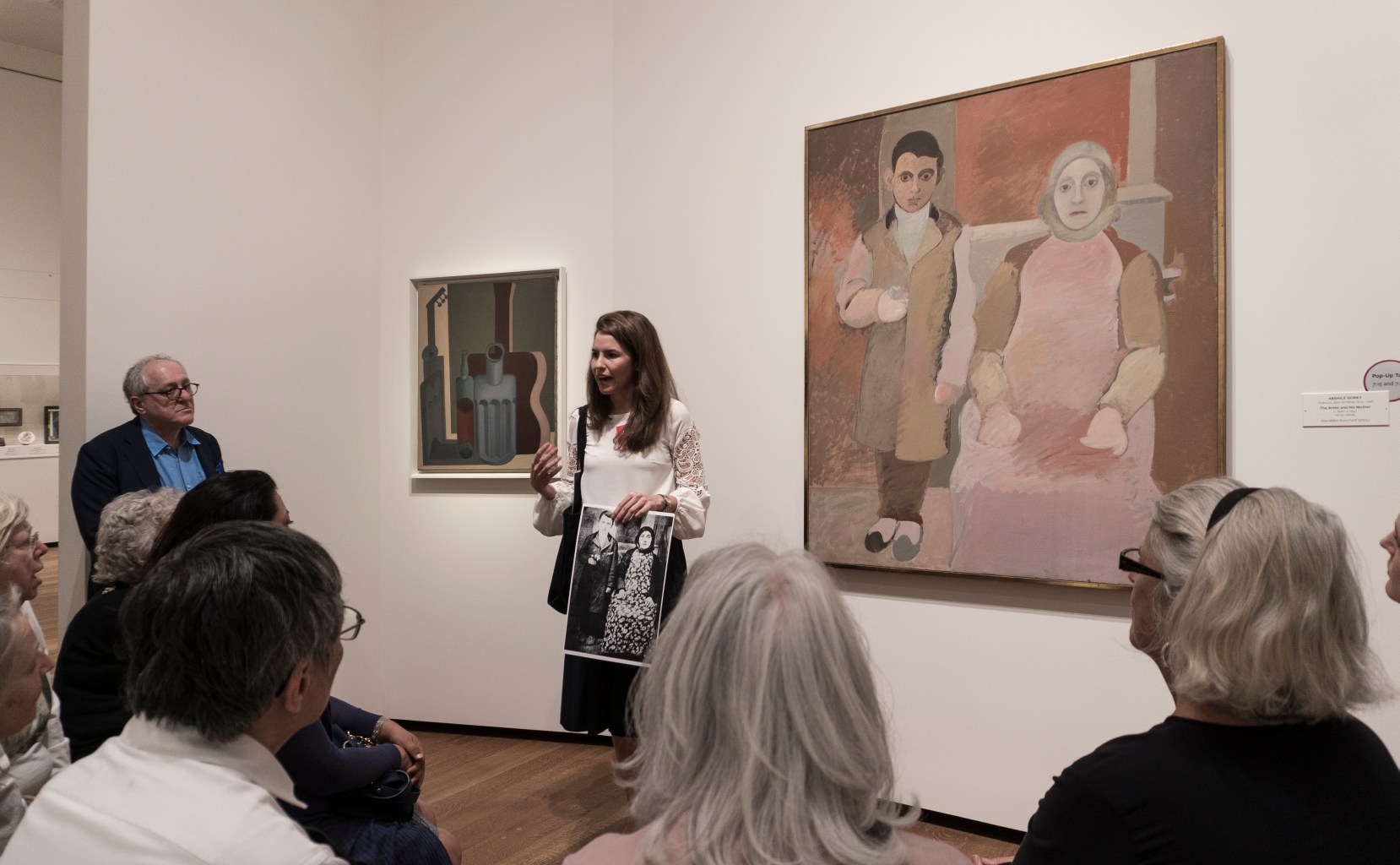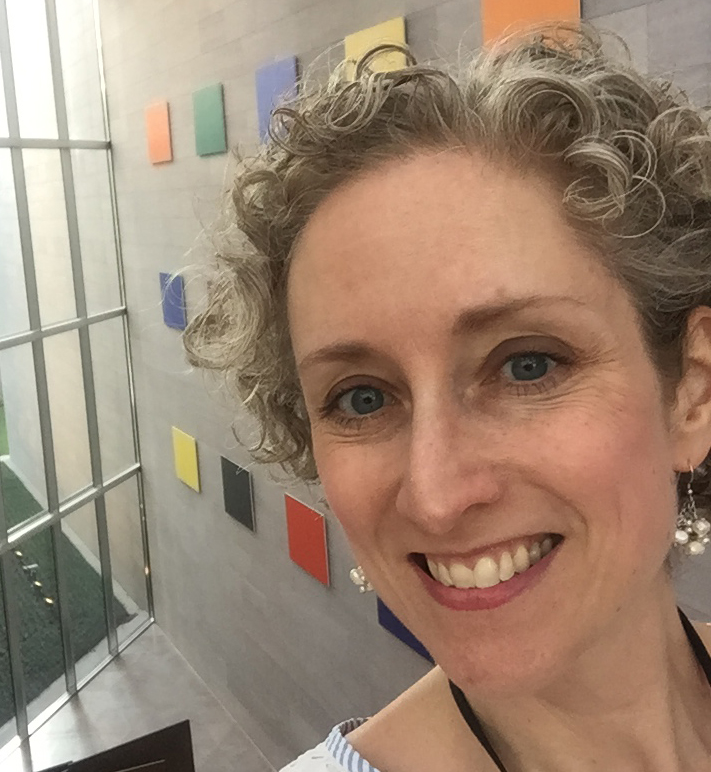
At the National Gallery of Art in Washington, DC, two new public programs and one new high school tour are built on the premises that empathy is worth cultivating and listening to the perspectives of others is valuable.[1] These programs intentionally prioritize slowing down and looking carefully, by inviting participants to share observations and ideas over a long period of time and encouraging active listening in order to practice perspective-taking. Museums can be ideal environments in which to support these kinds of experiences. As physical places where one can encounter the creative spirit and a collective history of humankind, they can unlock unexpected depths and responses from visitors. For many, museums are spaces removed from the everyday, where slowing down to look carefully and contemplate deeply is rewarded. They are also often places for shared experiences and social interaction with others, which can create the perfect atmosphere for sharing ideas and perspectives, whether complementary or conflicting.
Grounded in the educational theory of constructivism and informed by research, many of the National Gallery’s programs have been inspired by an initiative developed by the Harvard University’s Project Zero called Artful Thinking. Like the name suggests, this teaching approach helps learners develop critical thinking by looking at art. In education programs at the National Gallery of Art, visitors are invited to look first and then to share their own observations, ideas, and questions. This approach values and validates that learner’s thinking and encourages listening to others’ thoughts and perspectives. These conversations spark new ideas—thinking that would not have occurred without hearing another’s point of view. In this way, the very act of experiencing a work of art becomes an exercise in perspective-taking. Newer National Gallery programs extend these opportunities for perspective-taking by using strategies that foster the sharing and processing of different points of view, relative to the work of art under examination.
A New Model
These strategies produced especially novel outcomes when we wove them into a program for medical students and professionals. This program began when Julia Langley, Faculty Director of the Lombardi Arts and Humanities Program at Georgetown University Medical Center, and I wondered if conversations about works of art in the galleries of a museum could help medical students build their analytical skills and thus enhance the healthcare they provide. In 2016, we launched The National Gallery of Art & the Making of the Modern Physician as a six-week elective course for Georgetown School of Medicine students, which is still offered regularly for Georgetown students and anyone in healthcare or related industries as The Art of Care.
Over a series of two-hour meetings, participants in the program are asked to look at a single work of art for a sustained period of time (usually an hour), to listen actively as others share observations and ideas, to consider the benefits and barriers to empathy, and to share perspectives to question and combat bias. For example, in some meetings participants focus on the individuals represented in Arshile Gorky’s The Artist and His Mother (c. 1926-c. 1942) and Augustus Saint-Gaudens’s Shaw Memorial (1900).

After (temporarily) covering the wall label of Gorky’s painting, the facilitator asks participants to brainstorm all possible relationships between the figures. It is often impossible to come to a consensus, because the figures’ neutral expressions make the nature of their relationship uncertain. Their expressions may also make it difficult for viewers to connect with the boy and woman initially, but once the family’s dramatic story has been shared, participants come up with new ideas about how the artist might have felt about the subject. Participants then reflect on how ambiguity impeded an empathetic reading, and how background information changed their perception of the painting.
In front of the Shaw Memorial, participants are led through guided looking and writing activities to imagine stepping into the literal and figurative shoes of the men of the Massachusetts 54th, the first all-black regiment to form in the northern states during the Civil War. In this case, the historical record helps participants imagine how these men might have felt, but it also exposes the limits to empathy, especially when individuals do not share specific life experiences.
A New Approach
Empathy came into play in a new way in another program developed in early 2017.[2] Just Us at the National Gallery of Art, a program for visitors with memory loss and their loved ones, made us realize that we needed to fully embrace the strategies we were teaching as facilitators. We needed to flip the script and push ourselves to slow down and listen carefully to create the most successful program we could for this audience.
Visitors with memory loss often need more time to take in a work of art and to articulate observations, so facilitators must allow silences to extend beyond the usual breaking point. To be comfortable with this, one strategy they learned was to turn to look anew at the work of art being discussed. This relieves the participants of the pressure to produce a response by allowing quiet time to stretch out, the slower pace of the conversation offering encouragement and space for everyone to contribute.
We learned to listen in a new way, too. Counter to educators’ usual practice in other public programs of paraphrasing and connecting comments, it was important in these programs to actively listen and repeat comments as close to verbatim as possible. Thought it felt artificial and forced for educators at first, this practice helps avoid potential confusion for participants with memory loss, who may feel that they were not heard or understood if the educator recasts their statements or questions in words that were not theirs. Repeating, rather than paraphrasing, becomes a mark of respect for what the Just Us visitor shares.
It is critical for the success of Just Us to connect with participants on deeply personal, emotional levels, and this is where empathy becomes critical once again. The overriding goal of the program is for participants to leave the museum feeling good about themselves and about the experience. A recent study suggests that while individuals with memory loss may not remember why they feel happy or positive, these feelings outlast the experiences that sparked them. In order to make sure that everyone feels positive throughout a program, facilitators must quiet the litany of information and questions running through their minds and attend to their own body language, word choice, and tone; and the body language, tone, and emotional tenor of those in the group. Constantly trying to connect with individuals on a personal, emotional level—that is, with empathy—allows facilitators to stay truly tuned into the group.
In feedback gathered during the pilot phase, one participant shared that the program helped her “understand the work I am entrusted as a care giver. I love the way we interact in the discussion and the way our partners react. There is thinking, development, fun, expression, and learning.” Another care partner noted that they were able to “make observations about paintings together—to discuss informally, without worry about being right or wrong, then being with each other in a true conversation.”
The facilitators also revealed their unexpected lessons in feedback, reflecting that “This was an education in empathy, kindness, and compassion,” and “I learned to be myself and live in the moment.” With profound honesty, one educator shared that the program taught her to “Let go of expectations. Be comfortable with discomfort.”
The truism that good access for one is good access for all was proven again. What started as an accommodation for visitors with varying needs ended up teaching us a lot about ourselves as educators, and also about the deep-seated assumptions we make about what is best for visitors. The next step was to see if aspects of these programs could inform one for the general public, which was how Creating Connections and The Art of Looking were born in the spring of 2019.
New Programs
Creating Connections translates the activities developed through The Art of Care and The Making of the Modern Physician for a non-specialist audience, who connect revelations to their everyday lives rather than to medicine. Participants are led through some of the same activities as the medical student groups, including the looking and writing exercises with the Shaw Memorial. Whereas medical students and healthcare professionals often think about how empathy can help them connect with patients and colleagues, members of the general public contemplate the significance of taking the time to better understand someone else. For example, one participant in Creating Connections mused on “the importance of slowing down and seeing what’s going on ‘below the surface’—hence, where empathy happens” and another acknowledged, “we may never fully understand the interior lives of others, but we can care, try, and be kind.”
The overriding thread in feedback from the pilot phase was how energized people were by the simple power of hearing what others noticed and thought about works of art. One participant revealed that they were surprised “how much fun it was and how much I learned from other others in the class,” and another that “I’ve always thought of myself of at least a decent listener and have been told I am a good one. But I wonder if I am short-changing those I am listening to and myself by not listening as well as I could.” Creating Connections will continue to be offered quarterly in different parts of the National Gallery’s collection.
To build on the success of Creating Connections and to make it more widely available, a spinoff program called The Art of Looking began in the summer. The premise seems simple: participants gather for an open conversation about a single work of art for one hour. Even in a one-hour program, much can be done to create an environment in which where visitors can be fully present, actively listen to each other, and feel comfortable openly sharing thoughts. To achieve that, facilitators warmly welcome the group and describe the room where they will spend the session in detail. Pointing out aspects like lighting, ambient sounds, the color and texture of the walls, and other features is a practice borrowed from tours for visitors with vision loss, but it helps to bring all participants into the moment, which is then enhanced by a brief, shared mindfulness activity.
In a practice informed by lessons learned in the Just Us program, educators are invited to try repeating what participants say as close to verbatim as possible rather than paraphrasing, to see if or how that impacts the tone of the discussion. Educators also push themselves to allow for more time—to observe and share—beyond the point where it’s necessarily comfortable for the facilitator and especially beyond the point where the group vibe indicates that they’re “done, ” for that is where complexities truly come to light.
The Art of Looking sessions do not end when the background information about the artist and work of art has been exhausted. Rather, participants are invited to reflect on the experience they shared with the group. They think about what it feels like to spend so much time with one work of art, and comment on how a static work of art seems to shift, grow, or morph amid lively conversation. They also often comment on the luxury of time and the benefit of listening to a wide range of perspectives.
This year, we are piloting a new school tour designed for seventh through twelfth graders that builds on the trends from these new education programs. The tour will support the practices of perspective-taking and fostering empathy that are already intentionally integrated into different areas of school curricula, from social-emotional learning to language arts and history. In the seventy-five-minute Perspective-Taking through Art tour, students will encounter two works of art while being encouraged to think critically, on their own and as a group, about the multiple perspectives that exist within and around the works. They will attempt to step into the shoes of the artist, or a figure represented in a work of art, and consider the viewpoints they discover. This deliberate slowing down will give them the time and space to have meaningful conversations in increasingly frenetic lives, and we hope it will nurture curiosity about others at a time in their lives when they are constructing their own self-awareness and sense of identity.
We plan to gather feedback from both students and teachers about the impact of this tour on students’ ability to consider multiple perspectives more broadly in their learning and in life. These skills of articulating viewpoints, listening respectfully, and being willing to see things from new perspectives can be lacking in today’s society, but they connect us with each other and can bridge the gaps that divide us.
All of these programs will continue to explore and hone the fundamental tenets of slow looking, true active listening, tuning into the group, and allowing an unhurried time and pace for exploration to unfold. Responses from participants and facilitators continue to suggest that this work is as valuable for us all. There may be no better place to practice these skills for visitors and educators alike than in a museum; because each work of art is a document of or a response to the time in which it was made, and we are invited to explore the history of ideas even while reflecting on what these works mean to us—and to each other—today.
[1] I would like to thank Christina Brown, Heidi Hinish, Liz Diament, Jennifer Riddell, Julia F. Langley, and Deirdre Palmer for their input and feedback on this post.
[2] Initial training for this program provided by Carolyn Halpin-Healy of Arts and Minds.
About the author:
Lorena Bradford runs accessible programs at the National Gallery of Art (an AAM member) in Washington, DC, where she seeks to ensure a welcoming and rich experience for all visitors by eliminating physical, programmatic, technological, and other barriers to full engagement and discovery. She has developed and oversees programs for people with hearing and vision loss, people with memory loss and their care partners, visitors with sensory processing disorders and their families, and others. She trains National Gallery of Art staff and docents to assist with accessible programs and has consulted and led trainings on best practices for other institutions in Washington, DC, across the nation, and abroad.








